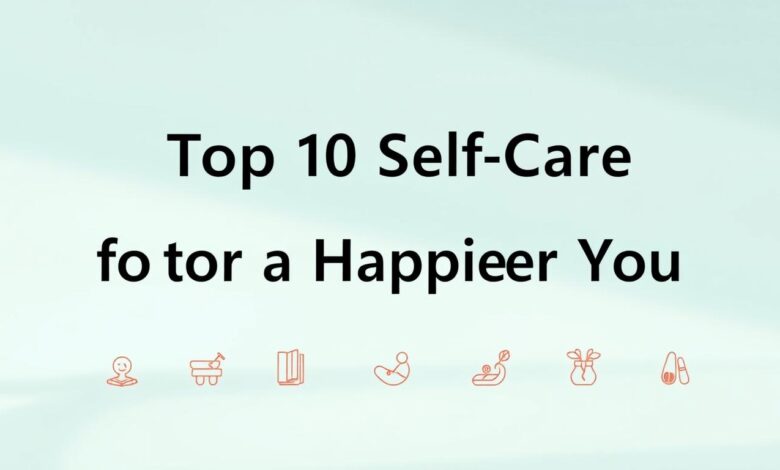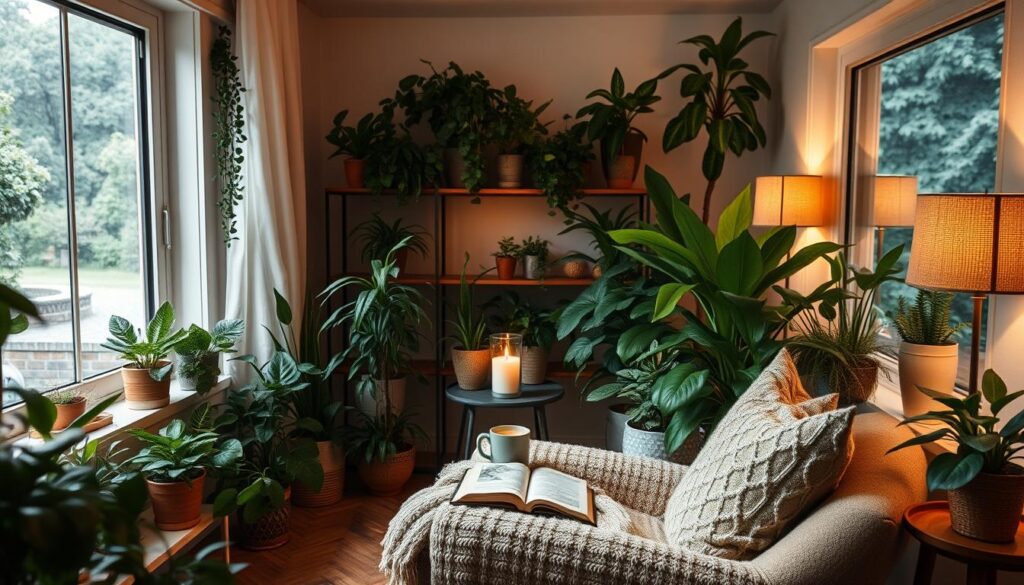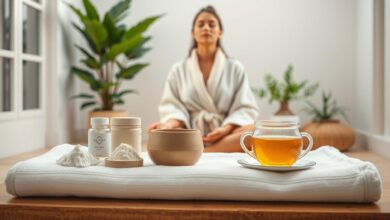Top 10 Self-Care Tips for a Happier You

Ever felt like there’s never enough time for yourself? In the rush of work, family, and daily chores, self-care often slips to the bottom of the list. But what if small shifts in your routine could turn the tide? This article shares the top 10 self care tips designed to fit into even the busiest lives. You deserve moments of calm and purpose—discover actionable self care ideas that transform stress into joy and clutter into clarity.
Key Takeaways
- Small daily actions can lead to big improvements in happiness and well-being.
- Self-care isn’t selfish—it’s a foundation for better relationships and productivity.
- These top 10 self care tips are backed by science and designed for real life.
- You don’t need extra time; self-care fits into even the busiest routines.
- Simple changes like better sleep or short meditation sessions create lasting positive impacts.
Understanding the Importance of Self-CareSelf-Care in Your Daily Life
Self-care is not a luxury; it’s essential for living well. Simple wellness tips like deep breathing or a short walk can increase energy and focus. Research shows these habits are key to keeping both mind and body healthy, yet many ignore them.
The Science Behind Self-Care and Happiness
Studies reveal self-care lowers stress hormones like cortisol. The American Psychological Association found those who practice mental health tips regularly have 30% less anxiety. Activities like taking breaks, journaling, or eating mindfully boost your immune system and emotional strength.
Why Many Americans Neglect Their Self-Care Needs
- Work culture often sees downtime as unproductive.
- More than 40% of U.S. adults skip breaks because of job demands (CDC, 2023).
- Society often views busyness as more important, making self-care seem selfish.
Breaking Down Common Self-Care Misconceptions
Myth: “Self-care is only for the wealthy.” Fact: Free activities like sunlight or stretching are incredibly beneficial. Myth: “It requires hours every day.” Even just 5 minutes of deep breathing can make a difference. Starting with small steps can turn myths into practical wellness tips for everyone.
Prioritize Quality Sleep for Better Mental Health
Quality sleep is key for self care habits. Without it, your brain can’t handle stress, focus, or emotions well. Studies show bad sleep can mess with your mood as much as skipping meals affects energy. Yet, many ignore it as part of daily self care practices.
Things like late-night screens or too much caffeine can ruin sleep. Here are some easy fixes:
- Stick to a consistent bedtime and wake time—even on weekendson weekends.
- Make your bedroom a tech-free zone. Blue light from screens delays melatonin release.
- Limit caffeine after 2 PM. A 2023 study found 68% of Americans drink coffee past noon, affecting sleep cycles.
| Good Habit | Why It Works |
|---|---|
| Dim lights 1 hour before bed | Triggers natural melatonin production |
| Wind-down routines (e.g., reading) | Signals your brain it’s time to rest |
| Avoid clock-watching | Reduces anxiety about falling asleep |
Small changes can make sleep a mindful self care practice. Your body and mind will be grateful. Better sleep boosts resilience, creativity, and emotional balance. Start with one change today; your future self will thank you.
Practice Mindful Meditation to Reduce Stress
Mindful meditation is a simple way to reduce stress and improve focus. Even brief sessions can become part of your daily self care routine. No experience needed—just a few minutes a day to feel calmer and more grounded.
Getting Started with 5-Minute Meditation Sessions
Begin with short, manageable practices to build consistency. Try this:
- Find a quiet spot and sit comfortably.
- Close your eyes and focus on your breath.
- When thoughts arise, gently return to your breath.
Start with 5 minutes daily. Over time, you can extend sessions. Consistency counts more than duration.
Apps and Resources for Guided Meditation
These tools make meditation accessible:
- Headspace: Offers guided sessions for beginners.
- Calm: Features nature sounds and sleep aids.
- YouTube: Search “guided meditation for stress relief” for free options.
Creating a Dedicated Meditation Space at Home
No fancy decor required. A corner with a cushion or chair works. Add plants, candles, or soft lighting to make it inviting. This space signals your brain it’s time to unwind.
Even a small area can anchor your practice. Keep it simple—your focus is on mindfulness, not perfection.
Move Your Body Daily to Boost Your Mood
Simple movement can change your mental health. Even small activities release endorphins, which are nature’s mood lifters. Here’s how to make it work for you:
Finding Exercise You Actually Enjoy
Self love tips start with movement that feels good. Ditch the treadmill dread—try these instead:
- Dance freely to favorite songs
- Join a community hiking group or garden
- Play tag with kids or pets
Incorporating Movement Into Busy Schedules
Wellness tips don’t require hours. Mix these into your routine:
- Swap meetings for walking chats
- Do 10-minute yoga flows via apps like Down Dog
- Desk stretches every hour
The Connection Between Physical Activity and Mental Well-being
Science shows exercise reduces stress hormones while boosting serotonin. A 2023 JAMA Psychiatry study found even light activity lowers depression risk. Here’s the impact breakdown:
| Activity Type | Mental Health Benefits |
|---|---|
| Aerobic exercise | Endorphin surge |
| Strength training | Confidence building |
| Flexibility workouts | Mind-body connection |
Every step counts—even fidgeting burns calories and eases tension. Celebrate progress, not perfection. Your body deserves compassion, not guilt.
Nourish Your Body With Mindful Eating Habits
Self care ideas often miss one of the simplest yet most impactful practices: how you eat. Mindful eating makes mealtime a self care habit that boosts energy and mood. Start by eating without screens or multitasking. Notice the colors, smells, and textures of your food.
This small shift helps you enjoy flavors and listen to your body’s fullness cues.
- Keep a water bottle visible to drink throughout the day.
- Pair protein with complex carbs—like eggs and whole-grain toast—for steady energy.
- Store pre-cut veggies and fruit in clear containers to make healthy choices easy.
“Eating is not just fuel—it’s a chance to nourish both body and spirit.” — Mindful Nutrition Guide
| Mindful Habit | Old Habit |
|---|---|
| Chewing slowly | Eating while driving |
| Listening to hunger cues | Skipping breakfast then overeating at night |
| Preparing balanced meals in 15 minutes | Reaching for pre-packaged snacks |
Self care habits like mindful eating don’t need fancy cooking. Prep a veggie omelet in minutes or mix Greek yogurt with berries. Avoid labeling foods “good” or “bad.”
Focus on how choices make you feel. Small changes add up, creating a foundation for lasting wellness without strict rules.
Top 10 Self Care Tips That Transform Your Daily Routine
Small habits can make a big difference. These top 10 self care tips fit into your day. They turn ordinary moments into chances for renewal.

Morning Self-Care Rituals to Start Your Day Right
Begin with intention:
- Write 3 things you’re grateful for in a notebook
- Stretch for 5 minutes to wake up muscles
- Enjoy a balanced breakfast like oatmeal with berries
- Set a daily goal before touching your phone
Midday Recharge Practices
Maintain energy with these quick breaks:
- Walk for 10 minutes outside during lunch
- Do 3 desk stretches every 90 minutes
- Breathe deeply for 3 minutes to reset focus
Evening Wind-Down Activities for Better Sleep
Prepare for rest with these calming steps:
- Power off screens 1 hour before bed
- Take a 10-minute warm shower with lavender oil
- Read a print book for 15 minutes
| Time | Practice |
|---|---|
| 7-8 AM | Gratitude journaling |
| 9 AM | Desk stretches |
| 12 PM | Nutritious lunch break walk |
| 3 PM | Mindful breathing |
| 6 PM | Healthy snack (e.g., apple + peanut butter) |
| 8 PM | Digital sunset (turn off devices) |
| 8:30 PM | Warm shower with aromatherapy |
| 9 PM | Journal reflections |
| 9:30 PM | Light reading |
| 10 PM | Set tomorrow’s intention |
“Self-care is not selfish—it’s essential for thriving.”
These daily self care routine ideas are flexible. Swap activities to match your schedule. Even 5 minutes of stretching or a quick walk counts!
Create Boundaries for Digital Wellness
Protecting your mental health starts with mindful tech habits. These self care practices help you control your screen time. They also reduce digital overwhelm. Small changes today build lasting mental health tips for a balanced life.
Set Screen-Free Zones and Times
- Turn off work emails after 7 PM to avoid burnout
- Host tech-free family dinners to foster real connections
- Take weekly device detox hours—like Sunday mornings
Curate Your Social Media Experience
Follow accounts that inspire you, not make you compare. Try these steps:
- Limit scrolling to 30-minute scheduled sessions
- Unfollow accounts that trigger anxiety or envy
- Enable app usage timers to stay on track
Use Technology as a Wellness Tool
Choose apps that support your goals:
- Meditation apps like Headspace or Calm
- Noise-cancelling playlists or nature sounds
- Phone settings that block distractions during work hours
Healthy tech habits aren’t about cutting out tech. They’re about using it with purpose. Small changes today can lead to big improvements in how you engage with the digital world.
Connect With Others Through Meaningful Relationships
Building strong relationships is key to taking care of yourself. Spending time with others boosts your mental health and creates a support network. This network helps you through hard times.
Studies show that having friends makes you happier and more resilient. So, it’s smart to focus on making and keeping connections.
| Action | Impact |
|---|---|
| Weekly virtual coffee chats | Maintains long-distance bonds |
| Join hobby-based groups | Meet people with shared interests |
| Express gratitude often | Strengthens emotional bonds |
Begin with small steps: text a friend you haven’t seen in months. Try a local book club or fitness class to meet others. Even a short daily chat with your partner can bring you closer.
It’s important to know when to say yes or no. Set limits to protect your energy. This way, you can focus on relationships that make you feel good.
It’s not about having lots of friends. Quality time, like cooking together or sharing openly, creates strong bonds. Make these moments a regular part of your self care. They bring joy and a sense of belonging into your life.
Design a Personal Self-Care Sanctuary at Home
Turn any space into a retreat for your well-being. These self care ideas and wellness tips make it easy to create a sanctuary, even in small areas.

Budget-Friendly Ideas for Your Self-Care Space
Start small and save money. Here are some easy steps:
- Turn an old bookshelf into a meditation spot with a cushion and string lights.
- Paint a wall with calming colors like sage green or soft blue for a peaceful vibe.
- Find affordable throws, pillows, or vintage mirrors at thrift stores to add charm.
Incorporate Nature Elements Indoors
Bring the outdoors inside with these wellness tips:
- Place hardy plants like snake plants or pothos near windows for fresh air.
- Hang driftwood or dried flowers in frames to add natural textures.
- Use a small tabletop fountain or a nature sounds app like Noisli for calming sounds.
Multisensory Approaches to Create Calm
Engage all senses for deeper relaxation:
- Diffuse peppermint or lavender essential oils (try brands like Plant Therapy).
- Layer textures with faux fur blankets, silk scarves, or wooden coasters.
- Play nature sounds or lo-fi music playlists on a portable speaker.
Even a 3×3-foot corner can be your retreat. Mix these self care ideas to create a space that’s uniquely yours.
Incorporate Creative Expression Into Your Self-Love Practice
Creative expression is a simple yet powerful self care habit that reconnects you with your inner voice. Whether you sketch, cook, dance, or write poetry, these activities help release stress. They build self love tips that nurture mental clarity.
Creativity is the language of the soul—speak it often.
- Coloring intricately in an adult coloring book
- Baking a new recipe as a mindful activity
- Writing free-form journal entries without editing
- Moving to music in your kitchen “dance floor”
Perfection isn’t the goal here. A scribbled poem or lopsided clay pot holds more value than polished but ignored masterpieces. Let go of “I’m not artistic enough” thinking—your creations are for you, not an audience. Even 10 minutes of doodling during lunch breaks counts.
Science shows creative flow states reduce cortisol levels, acting as a natural mood booster. When you engage senses through art, you practice self-compassion by honoring your need to play. These moments build resilience against life’s daily pressures.
Make creativity a non-negotiable part of your routine. Tack on 15 minutes to your evening wind-down or add a craft break between tasks. Remember: every brushstroke, note sung, or baked good decorated is an act of love toward yourself.
Track Your Progress With a Self-Care Journal
Journaling is a simple yet powerful tool to boost your self care practices. Use it to spot patterns, celebrate wins, and fine-tune your mental health tips. Here’s how to start:
Journal Prompts for Self-Reflection
Ask yourself these questions daily or weekly:
- What small act of self-care felt most rewarding today?
- What triggered stress, and how did I respond?
- Name one thing I’m grateful for that supports my mental health.
Try These Journaling Methods
Experiment with styles to find what suits you best:
- Narrative writing: Write freely about your day and emotions.
- Bullet points: Note key moments in short phrases.
- Art journals: Sketch, color, or collage to express feelings visually.
- App options: Try apps like Day One or Journey for digital tracking.
Spot Patterns to Grow
Review entries weekly to notice trends. Here’s how:
| Pattern to Track | How to Journal It |
|---|---|
| Mood shifts | Note energy highs/lows next to daily activities |
| Self-care effectiveness | Rate 1-10 how much each activity helped |
| Stress triggers | Mark dates/times stress occurred and your coping methods |
Adjust your routines based on what your journal reveals. Celebrate progress and be kind when habits slip—this is about learning, not perfection.
Conclusion: Building Sustainable Self-Care Habits for Lasting Happiness
Your well-being is built on making consistent, personal choices. The top 10 self care tips, from sleep to creativity, lay a strong foundation for happiness. Starting small, like a 5-minute meditation, can make a big difference over time.
Life can throw curveballs that disrupt your plans. Don’t see it as a failure; just adjust and start again. Maybe you need more flexibility one week or less screen time another. The key is progress, not perfection.
Begin with one change that feels right to you, like journaling or setting screen-free times. Even small steps can lead to big changes. Over time, these habits become second nature, helping you handle stress better.
Keep revisiting these tips as your life evolves. A self care routine is a personal journey, not a checklist. Every effort you make today sets the stage for a healthier tomorrow. Take control now and watch your life flourish.




